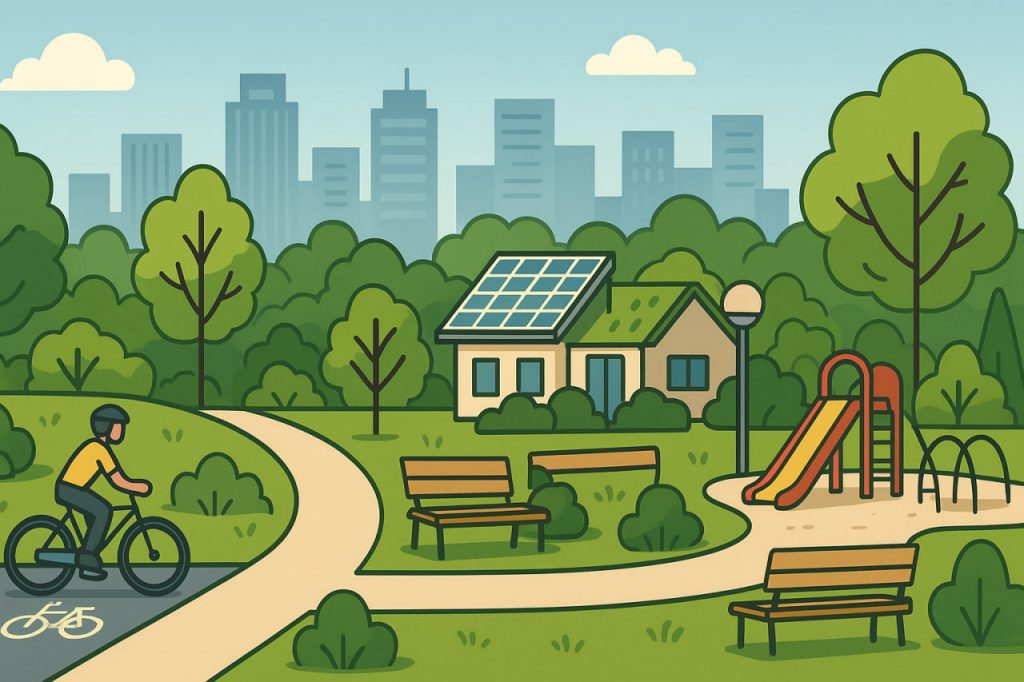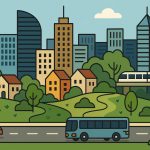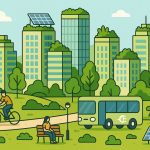Modern parks are public spaces designed not only for recreation but also for ecological balance, health, and social interaction. Unlike traditional parks, they combine nature, architecture, and technology to meet the needs of growing urban populations.
History of Parks
The first public parks appeared in ancient civilizations as royal gardens and later as spaces for citizens in ancient Rome and Persia. In the 19th century, the rise of industrial cities led to the creation of urban parks, such as Central Park in New York, which provided residents with green relief from urban density.
Features of Modern Parks
Today’s parks include more than just trees and walking paths. They often feature bike lanes, sports grounds, interactive fountains, eco-playgrounds, rooftop gardens, and smart lighting systems. Many also integrate renewable energy sources, recycling systems, and sustainable landscaping.
Role in Urban Life
Modern parks improve air quality, regulate temperature, and reduce urban noise. They provide spaces for exercise, relaxation, cultural events, and community gatherings. Parks also serve as mental health sanctuaries, offering escape from the stress of city life.
Environmental Benefits
Parks are vital for biodiversity in urban areas. They support pollinators, birds, and small animals, while green roofs and vertical gardens enhance ecological sustainability. By absorbing carbon dioxide, parks help cities fight climate change.
Challenges in Park Development
Rapid urbanization often leaves little space for green areas. Funding, maintenance, and balancing ecological needs with recreational demand are ongoing challenges. However, innovative design and community involvement can help overcome these barriers.
Conclusion
Modern parks are more than decorative green zones; they are essential elements of sustainable cities. Combining nature with innovation, they improve health, strengthen communities, and protect the environment for future generations.
Interesting Facts
Today’s parks integrate native vegetation, wetland restoration, and renewable energy systems to support biodiversity and combat pollution. Many are designed as climate-resilient landscapes, capable of absorbing stormwater, reducing heat islands, and improving urban air quality. Cities like Seoul, New York, and Singapore are transforming former industrial zones and rooftops into lush green sanctuaries. Interestingly, studies show that spending just 20 minutes in green spaces can significantly lower stress and blood pressure, making parks essential for public health. Modern park design also embraces smart technologies, such as solar lighting, environmental sensors, and interactive learning zones that connect visitors with nature. These new green spaces symbolize the future of cities — blending ecology, technology, and culture to create environments where both people and nature thrive.
Glossary
- Modern park – urban green space designed with ecological and social functions in mind.
- Sustainable landscaping – environmentally friendly design and maintenance of green areas.
- Green roofs – rooftops covered with vegetation to improve insulation and biodiversity.
- Biodiversity – the variety of living organisms in an ecosystem.
- Urbanization – growth of cities and population concentration in urban areas.
- Smart lighting – energy-efficient, sensor-based lighting used in public spaces.


